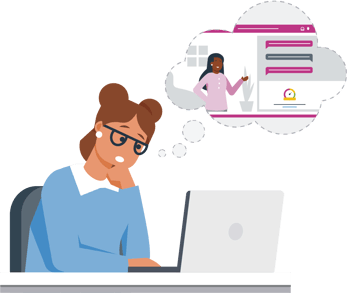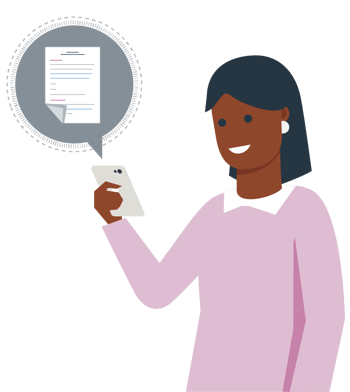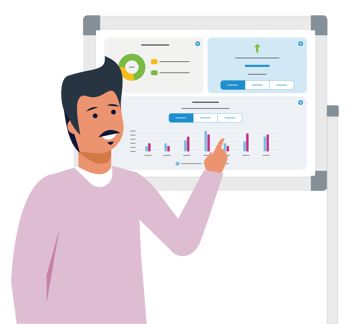Product training is about so much more than just product knowledge. Good product training improves sales, creates champions of your brand, focuses on uncovering and supporting customers’ needs, and builds brand loyalty.
But what is good product training? How do we take a list of features or ingredients and actually make it engaging and practical for learners so that they walk away with skills and knowledge they can actually put into practice?
Here are six best practices I never go past when creating product training.
Make it customer-centric with customer personas
Product training is of course about the product, but we shouldn’t lose sight of the customer. At Guroo Producer we strive to always create learning that is learner-centred. We start by creating learner personas for each of our target learners to understand who they are, what their motivations are for doing the program, and any barriers they may have. When creating product training, writing customer personas similarly ensures your product training is not only learner-centred, but customer-centred.
When sales professionals understand who their customers are and what their needs are, they can tailor solutions to meet those needs.

Create opportunities to practise with scenario-based learning
You can also use this deep understanding of your customers to create real-world scenarios, with realistic customers, for learners to apply their selling skills. Customer scenarios are a critical part of any product knowledge training.
If your course is online, consider using video to set the stage for the scenario followed by some scenario questions. You could even build in branching pathways to allow the learner to explore a number of different potential scenarios based on their product recommendations. Remember to build in things like common objections or frequently asked questions.
Embed learning with on the job resources
Product training shouldn’t be a knowledge retention test, it should focus on giving learners a chance to put their knowledge into practice and providing resources for them to draw on when they need them on the job. Providing just-in-time resources like fact sheets and guides that learners can download and refer to later also means you can skip the detailed lists of features and focus training on building confidence and capability.

Put learning where it's needed with mobile responsive design
Not all learners are working at a desk, especially those in sales roles. It sounds obvious but always make sure that product training is mobile responsive so that employees can access training when and where it suits them.
Streamline your training with microlearning
Similarly, just keep it simple short, silly. It’s likely that employees will be doing product training on the job, so breaking content into bite-sized micro-courses allows employees to complete bites around their workload. Chunking content into a single product or service per module also helps learners to retain information and can easily return for a refresher if they need to.

Deliver practical, measurable results
Through product training, businesses ultimately want to boost sales and satisfy their customers. While course completions and overall scores helps you to see who is accessing the training and an overall picture of how they went, consider measuring multiple KPIs, like features and benefits, selling skills, and customer conversations to understand where the strengths and weaknesses in your team may be and where you can provide additional support.

.png)

